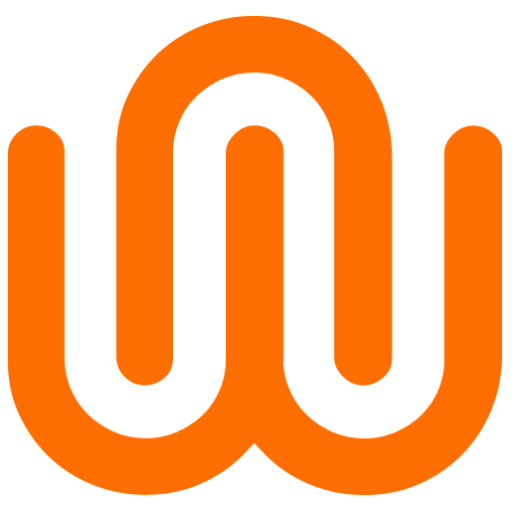WireFlow Test Framework
Hardware and software building blocks
State-of-the-art software tools and hardware building blocks that provide high quality, affordable price, off-the-shelf delivery and easy software integration.
The hardware building blocks
The instrumentation is placed in the part of the test fixture called I/O-box. The choice of which types of instruments used depends upon the boards being tested. They can be power supplies, network devices, voltage meters, electronic loads, relays, communication bus interfaces etc.
WireFlow has a portfolio of hardware building blocks that can be used directly off-the-shelf. By using these “standard” instruments, development time is reduced, and risk is minimized since we are already familiar with these devices and know how to integrate them into the system in the best way. Of course, it is also possible to add other instruments and hardware building blocks thanks to the flexibility of the platform.
I/O boards and instrumentation
We prefer to use I/O boards and instruments from National Instruments. These integrate very well with our software platforms that are based on LabVIEW and TestStand, which also are developed by National Instruments.
For most test stations we use USB based instrumentation. For this we can use a Multifunction I/O device such as the USB-6225 or the smaller USB-6001. If we need more precise measurements of voltage, current and resistance we can use the Digital Multimeter Device USB-4065. For microvolt (uV) measurements, or temperature measurements we can use the Temperature Input Device USB-TC01.
For even higher performance and channel count, we use instrumentation based on CompactRIO or PXI from National Instruments. Both these platforms also integrate well with our software platform.
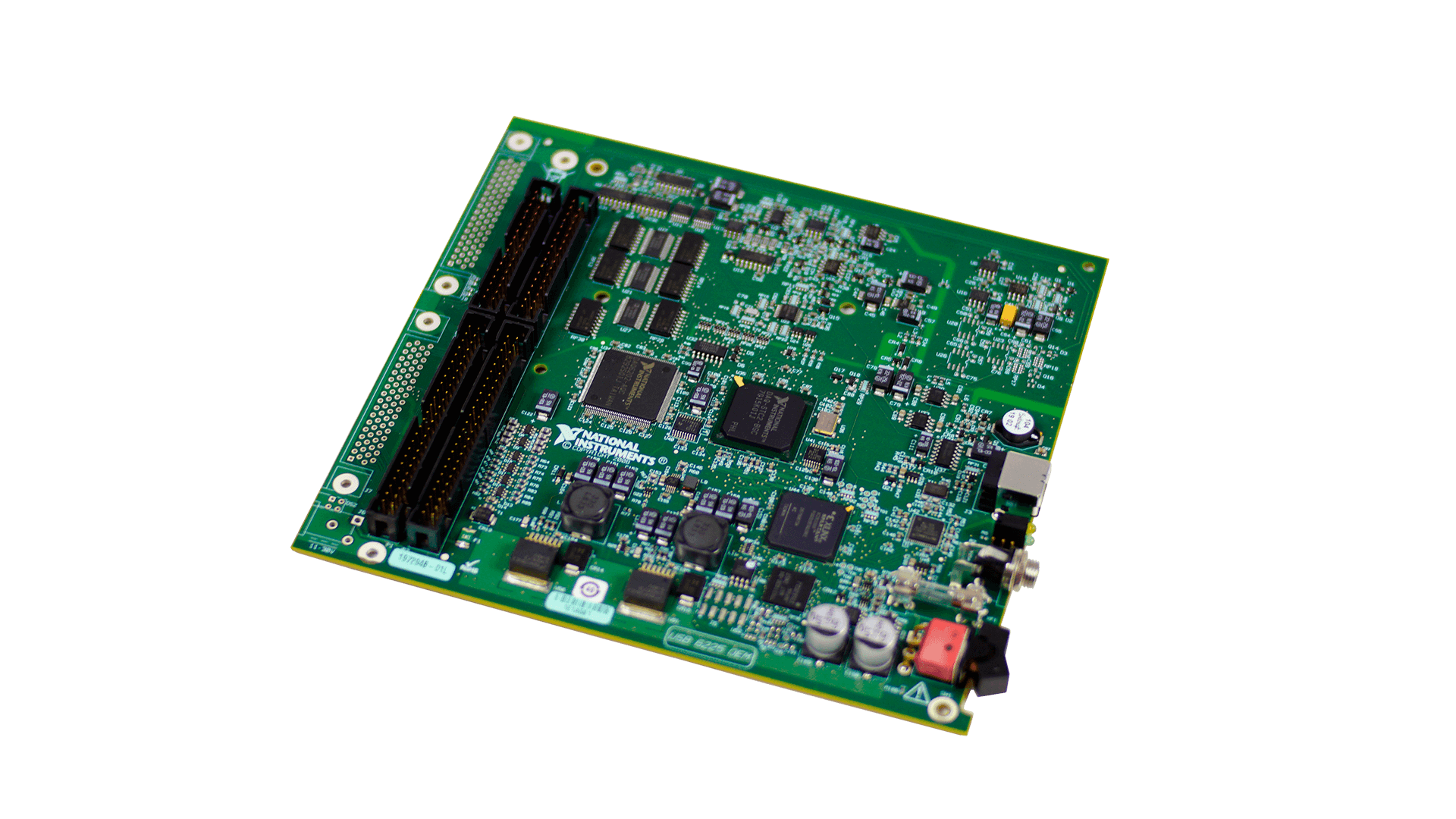
The USB-6001 OEM Multifunction I/O Device from National Instruments
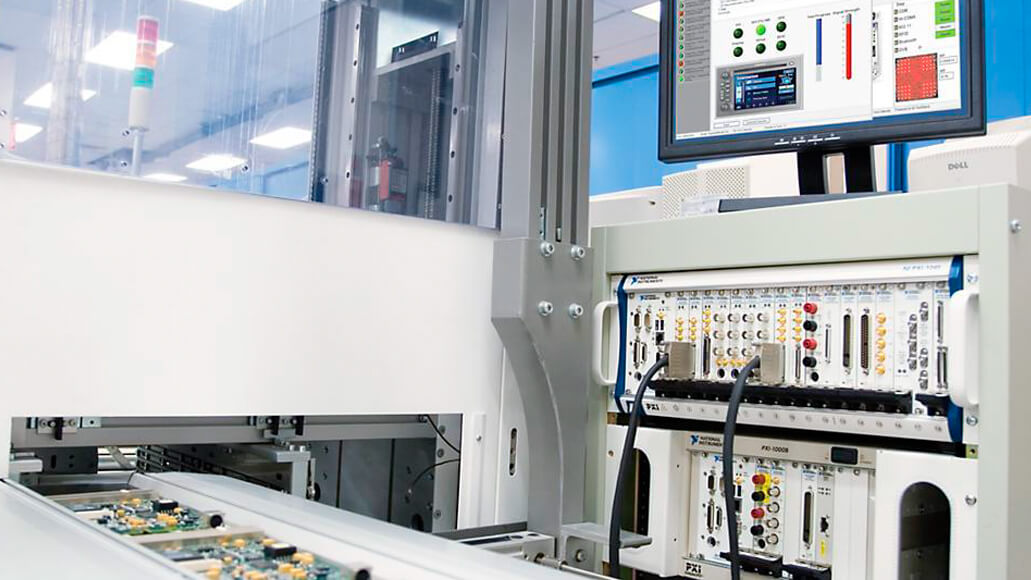
High-end PXI instrumentation from National Instruments
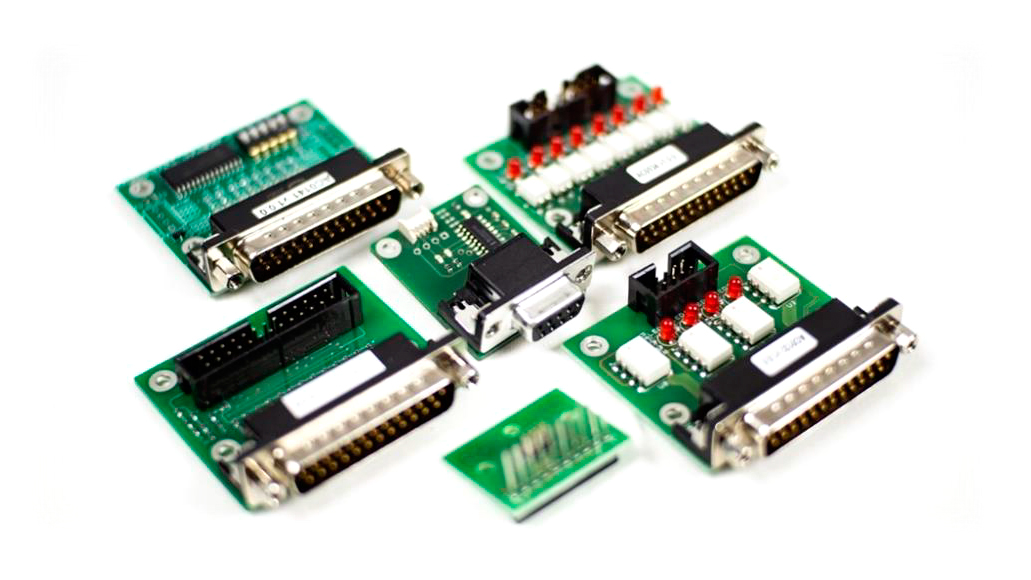
Signal conditioning boards, including three solid-state relay boards
Signal switching and relay boards
It is common that test fixtures need relays to perform signal switching during the testing. It can be necessary to switch an instrument between different test-points, or to apply different loads to the board under test. For PXI and compactRIO there are several options from different manufacturers. Worth mentioning is the WF 3132 Multiplexer Module from WireFlow. For the more affordable test stations based on USB instrumentation, we have developed a set of relay boards especially made for compact test fixtures. These relay boards exist in a few variations with different current capabilities and use solid-state relays to provide long life expectancy.
ICT test board
To do In Circuit Testing (ICT) you need instruments that can measure resistance, capacitance, inductance, diode characterization etc. and also an extensive switching matrix. A traditional dedicated ICT tester is usually a very large apparatus requiring a huge investment. However, in the WireFlow test framework we can use a remote-controlled multimeter in conjunction with the WireFlow relay boards to do ICT testing in a much more affordable way. To reduce cost further WireFlow has developed a dedicated ICT board that contains functionality to perform both resistance, capacitance and diode measurements and also handle switching. By lowering the requirements for measurement accuracy slightly, you can reduce cost dramatically for doing ICT by using this dedicated ICT board.
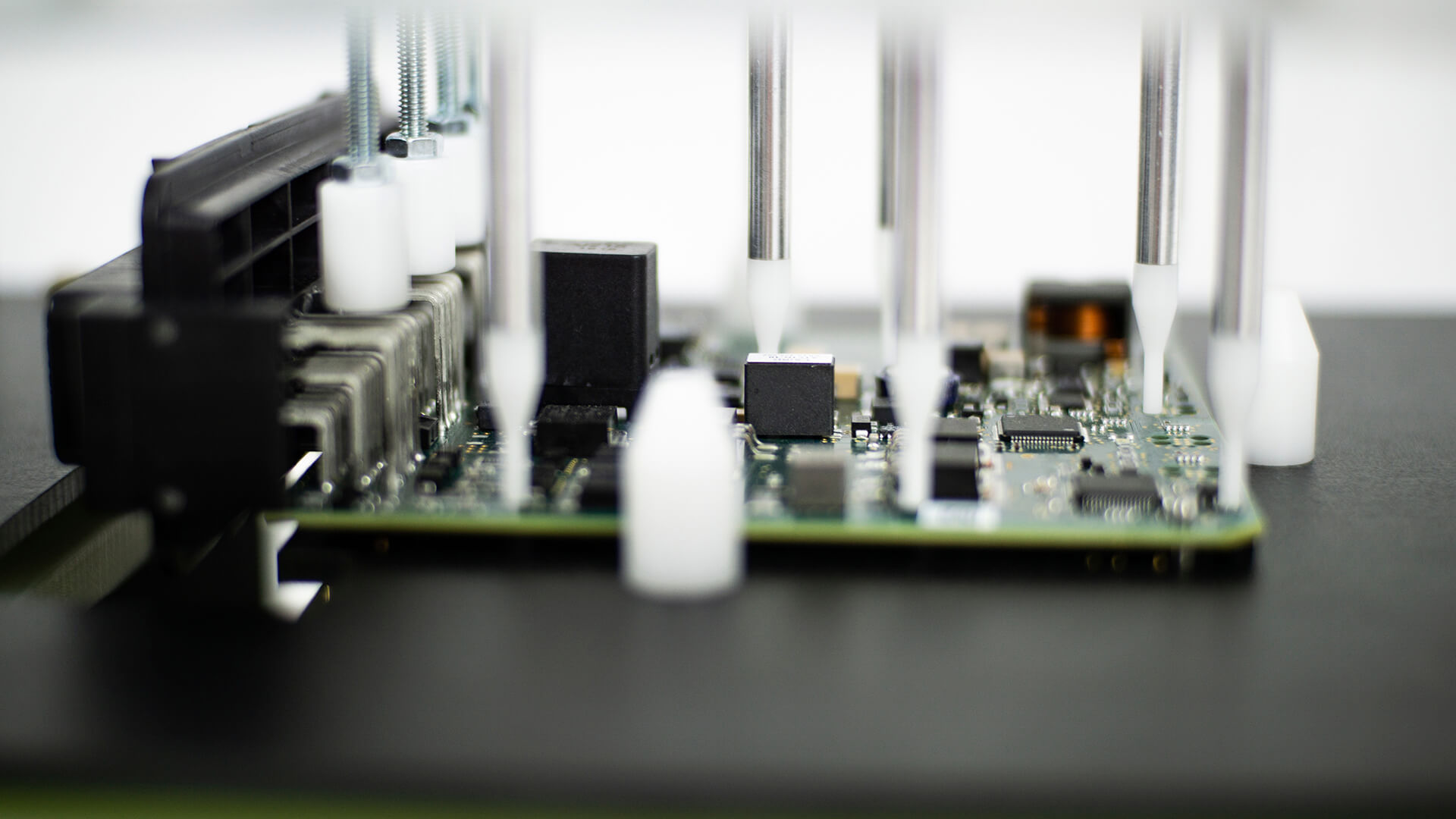
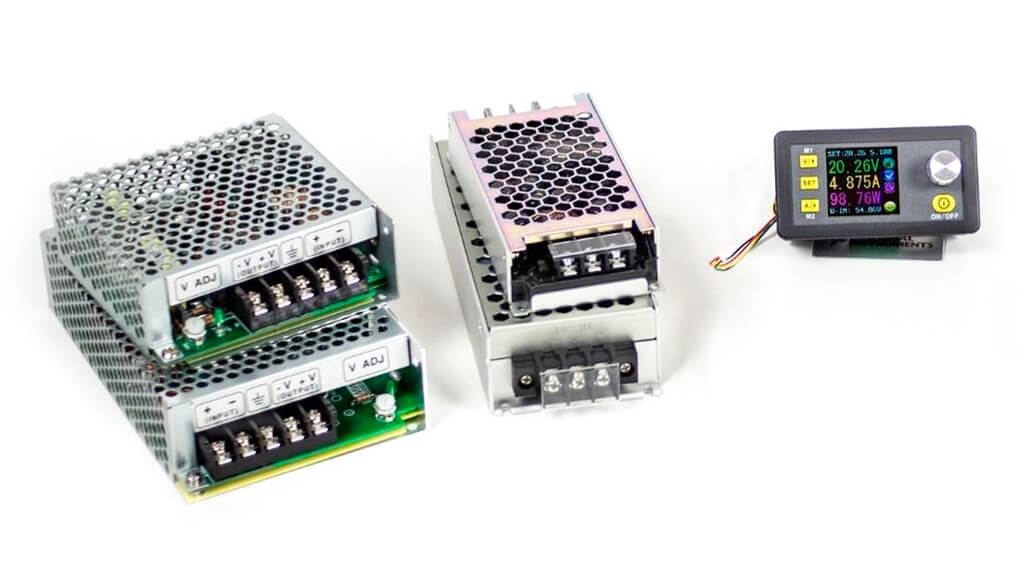
Fixed- and remote-controlled power supplies
Power supplies
The I/O-box is equipped with the power supplies needed to power both the instrumentation and the board under test. They can have fixed and/or variable voltages, small or large current capabilities, isolated or non-isolated grounding. WireFlow have several standard supplies in the portfolio that integrate well with the platform. WireFlow has the experience required to design a good power distribution in order to avoid grounding problems, which can be a problem in test and measurement systems.
Lightprobes
Light Emitting Diodes, or LEDs, on the board under test can be tested using several different methods. The easiest method is to ask the test operator to verify the LEDs during the test execution. Another method is to measure the forward voltage over the LED. This is a reliable method that indicates that the LED is mounted and that it is mounted in the right direction. Another method, that requires neither any operator interaction nor testpoints access to the board, is to use a light probe to do a measurement of the light emitting from the LED. We can add cost-effective light probes to the test fixture that can measure light intensity and color, as well as blinking rates.
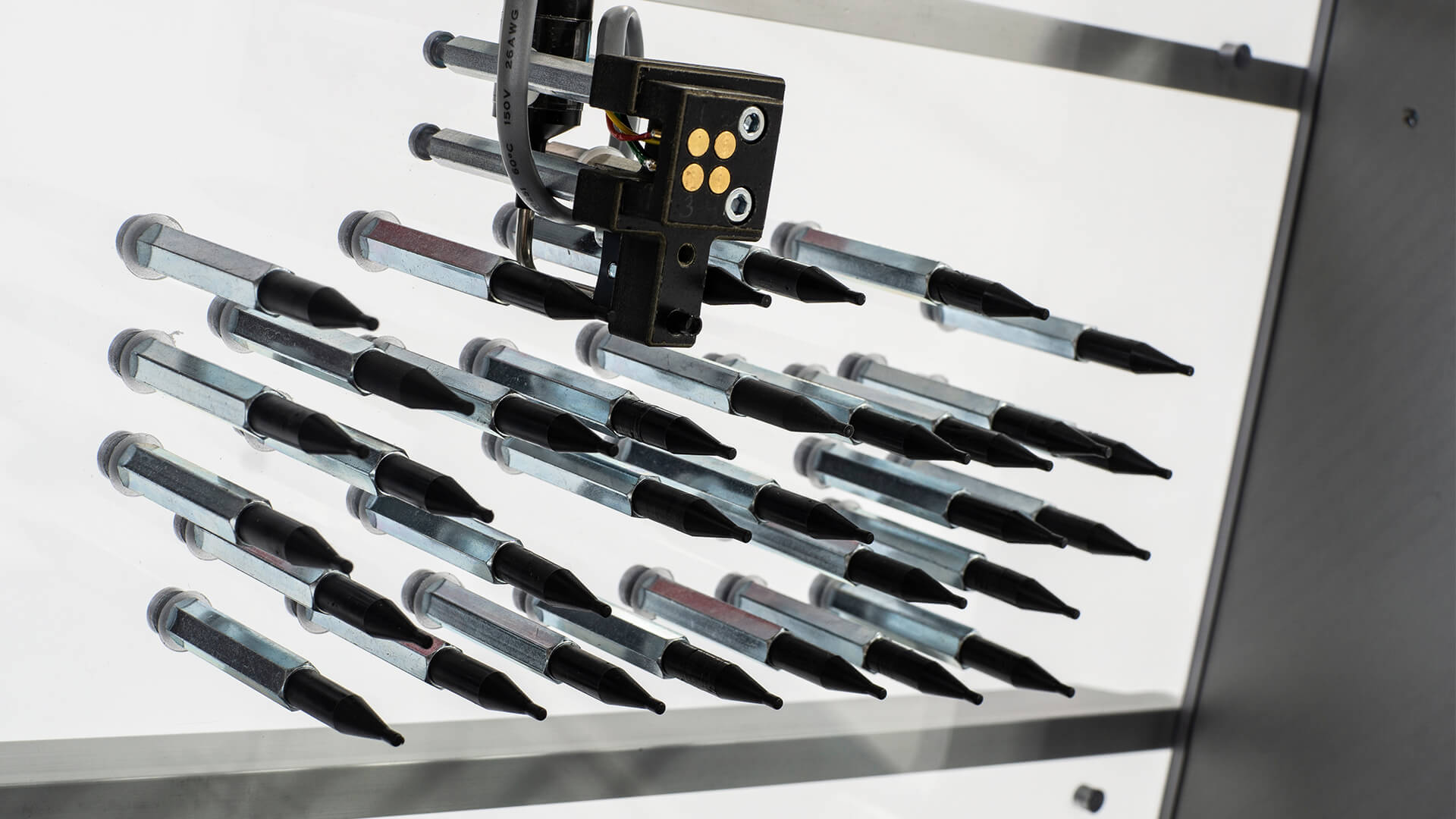
A light probe mounted on the pressure frame unit next to the pushrods.
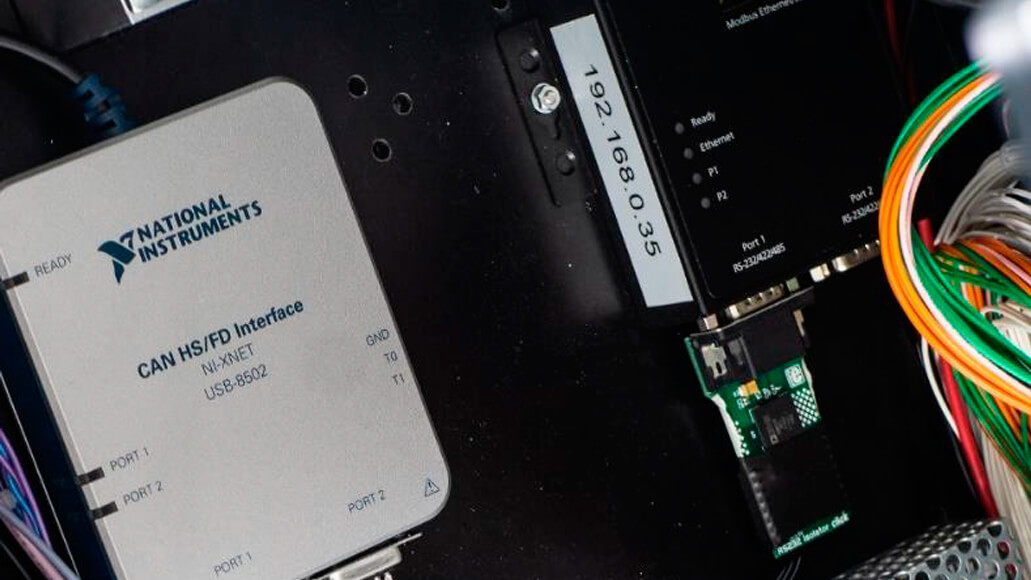
An I/O-box containing CAN and isolated RS232 interfaces.
Communication bus interfaces
It is common that the board under test employs one or more communication buses. To be able to use and test them, the test fixture needs to be equipped with the corresponding bus interface. Common standards used are; Ethernet, DeviceNet, RS232, RS485, USB, SPI, I2C and CAN. The WireFlow I/O-box can be configured with any of these interfaces.
Board programming devices
Boards with processors need to be programmed with the correct software and configurations before shipped to the customers. For very large volumes the software can be preprogrammed into the processors by the processor manufacturer, but normally the software is programmed at the test station. By adding a JTAG programmer to the I/O-box, the test fixture can also be used to program software and configurations into the board under test.
Software building blocks
The software building blocks
The WireFlow Test Framework uses state-of-the-art software tools like LabVIEW, TestStand, WATS and TeamViewer. For these tools, we have developed an extensive library of instrument drivers, code templates, design patterns and customizable user interfaces.
Instrument drivers
For the instruments and other hardware building blocks used in the WireFlow Test Framework, we have built an extensive library of instrument drivers. We use the systems engineering software LabVIEW from National Instruments. LabVIEW is a graphical programming language that is very expedient for development of instrument control software.
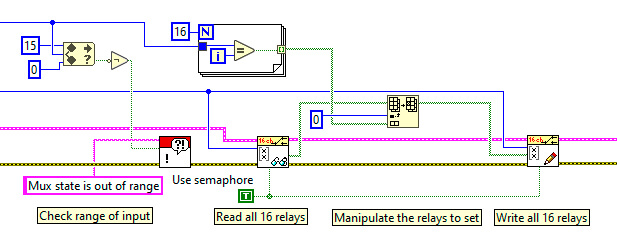
Instrument control in LabVIEW.
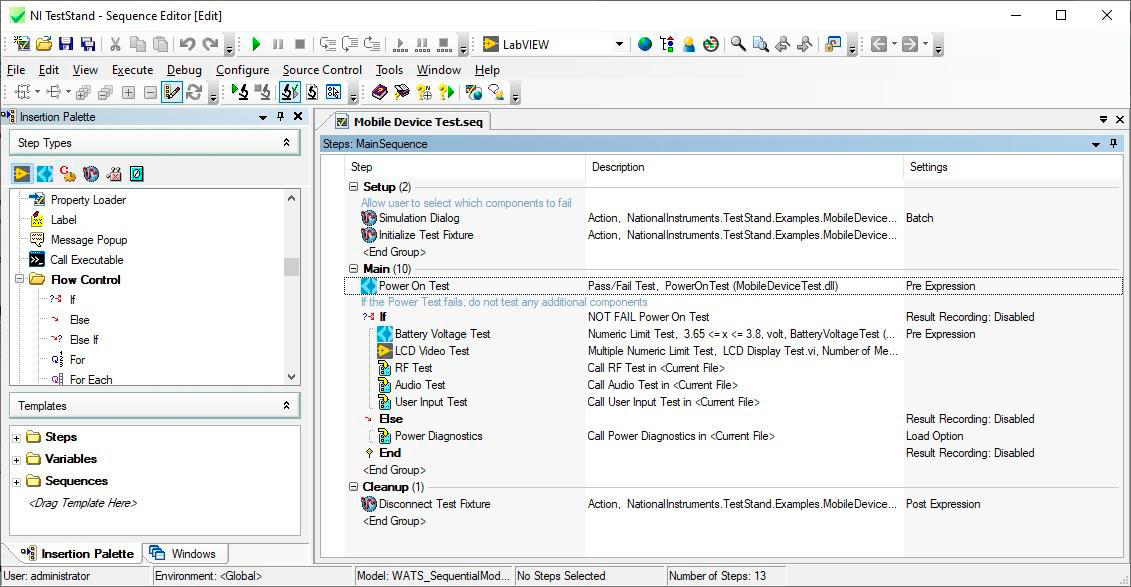
Test sequence in TestStand.
Test sequence development
TestStand from National Instruments is used for developing automated test sequences according to a test specification. TestStand is a test management software that provides extensible plug-ins for creating reports, database logging, and connectivity to other systems.
Our preferred tool for designing code modules for instrument control and other functions is LabVIEW, as it is very efficient in developing test software. However, it is possible to integrate software modules from most programming languages. We can for example use software modules from your development activities in the test system when appropriate.
Customizable operator GUI
Once the test sequences are finished, it is possible to use a user-friendly Graphical User Interface, GUI, to control the test system. We have developed a highly configurable GUI for the WireFlow test framework. Together with you, we can configure and adapt the GUI to your specific needs.
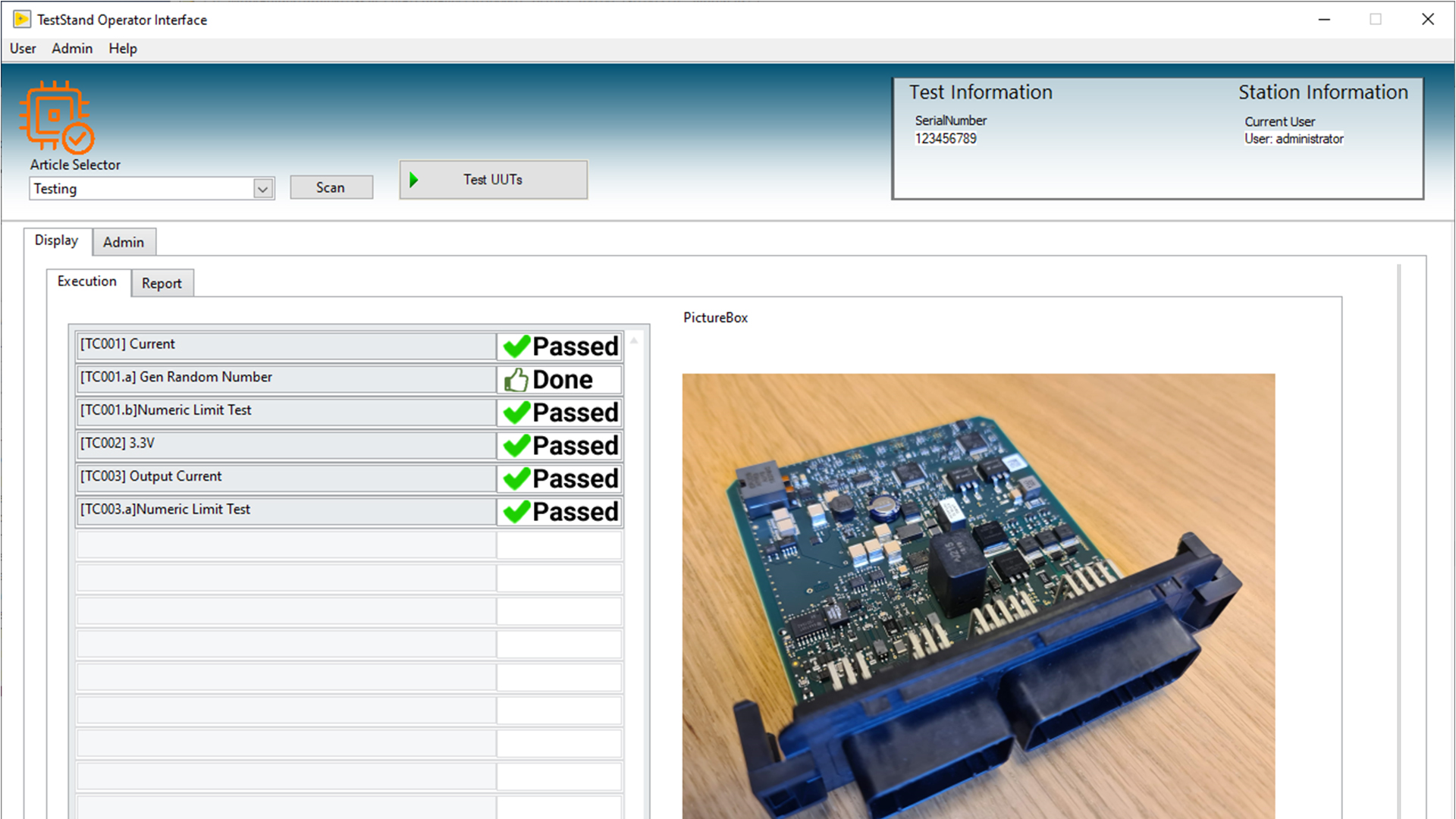
Operator control panel.

Peripheral systems software
With the LabVIEW and TestStand platforms we can easily integrate with other peripheral software systems. We usually integrate the test stations with the WATS cloud based test result database system from Virinco. We can also add accessories like Label printers, Optical scanners, Fingerprint login solutions and Touch screen interfaces. For source version control we use Apache Subversion (SVN). To enable remote login for the WireFlow support engineers, we can install TeamViewer on the test stations on request.
About WireFlow Test Framework
WireFlow has long experience in helping companies set up test and programming environments for electronic production. We have gathered all our tools and knowledge into a versatile framework we call WireFlow Test Framework. Using our framework, we can help you to quickly develop an effective and affordable solution for testing and programming your products in the production line.
Take a look at any of the other fundamentals of WireFlow Test Framework:
